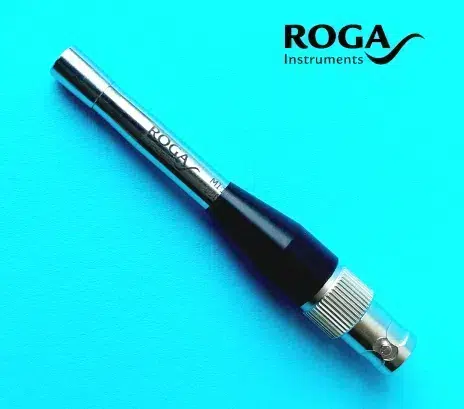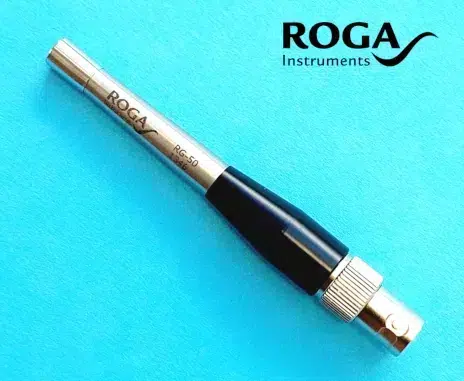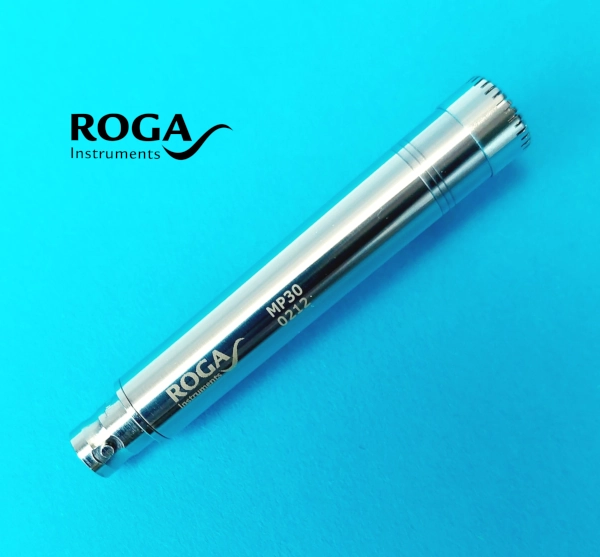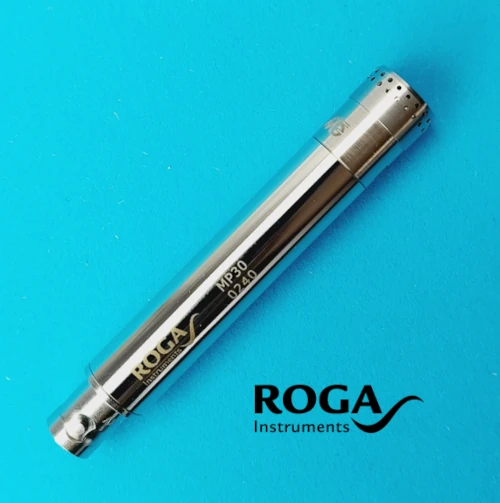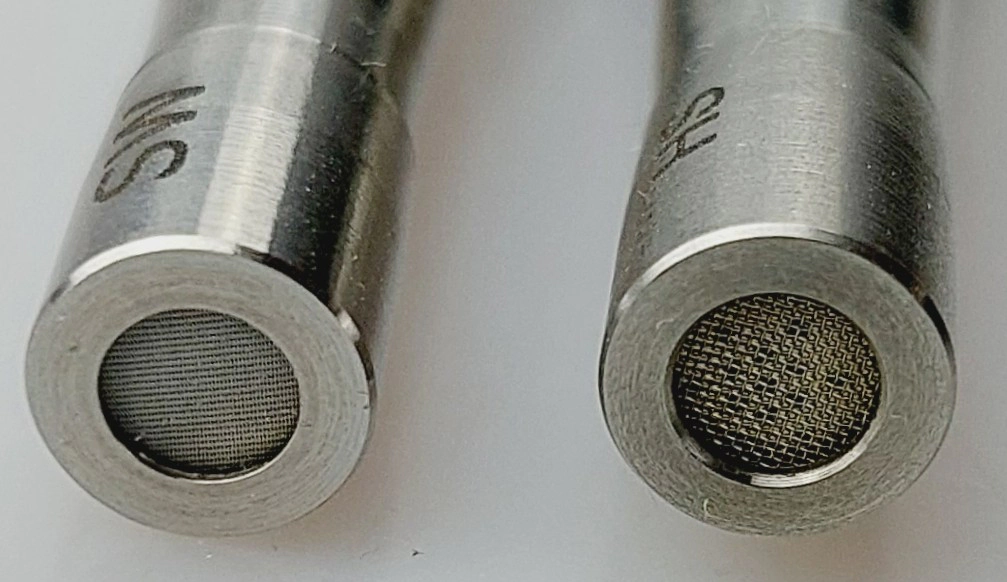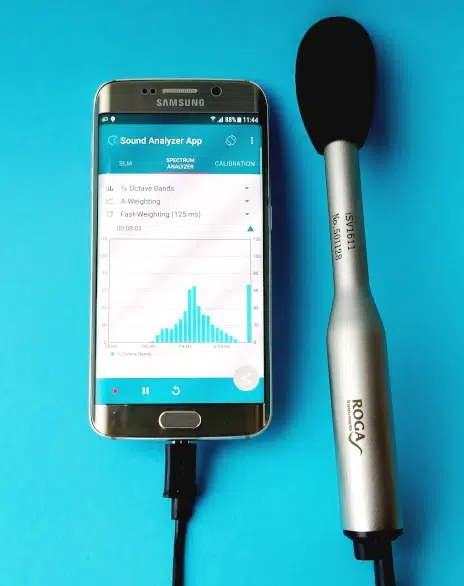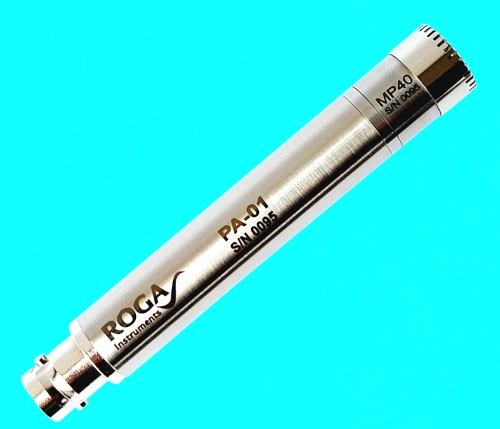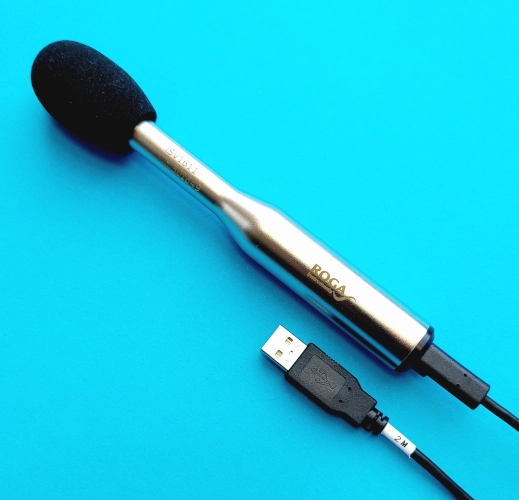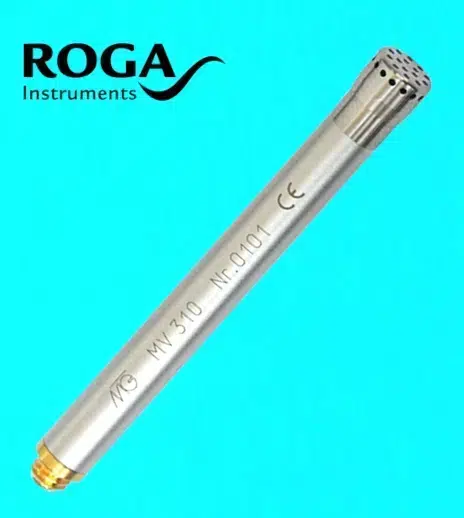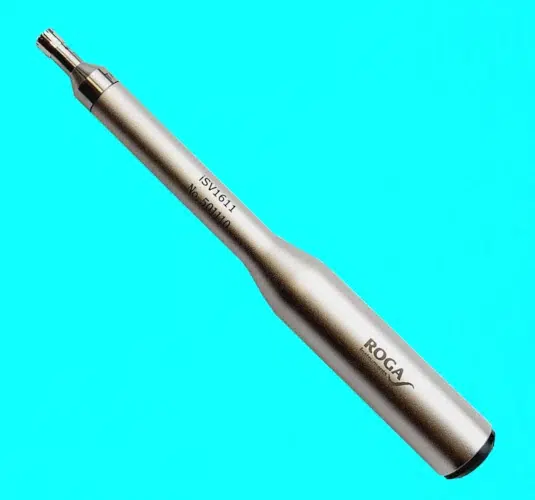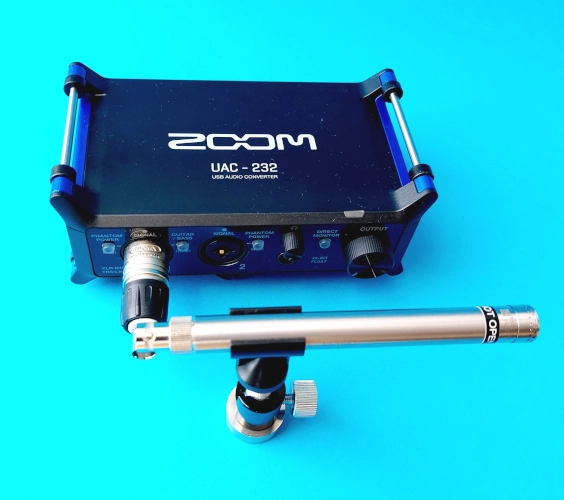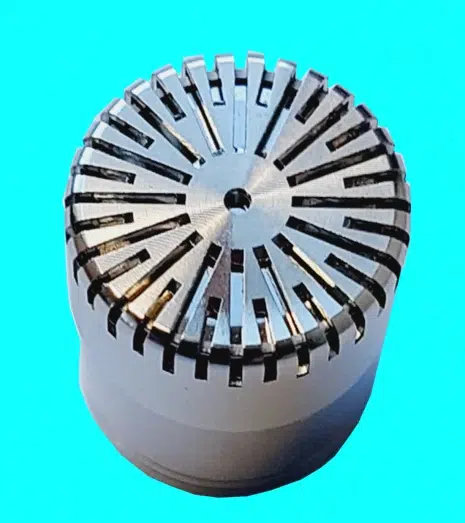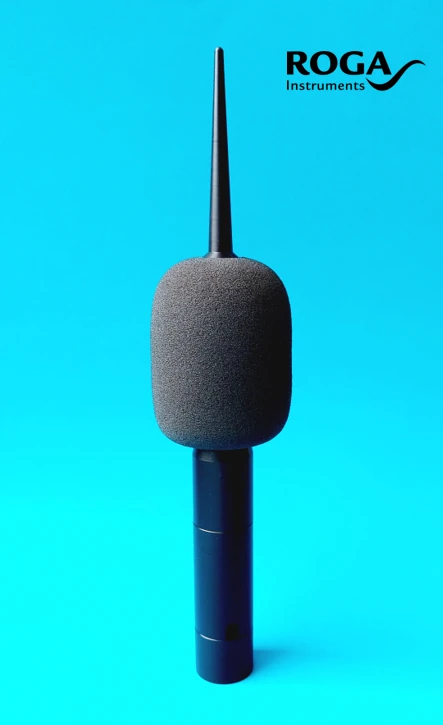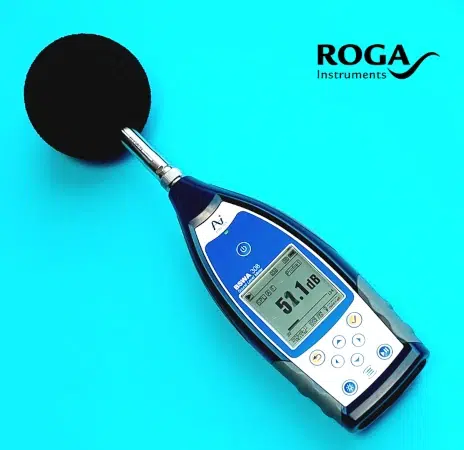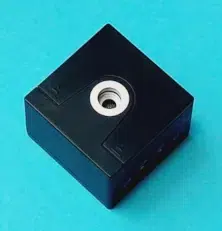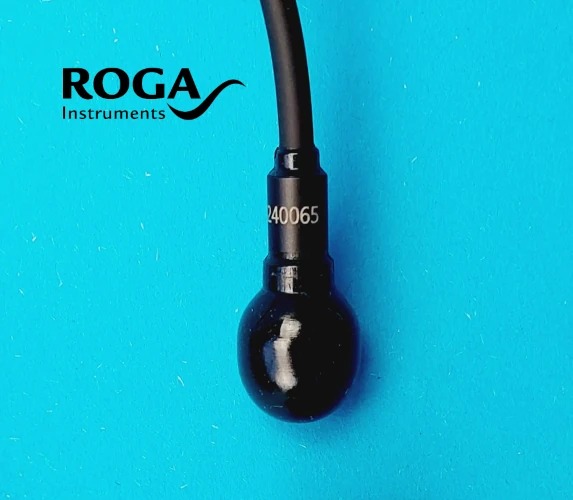ICP® Microphone Price
Measuring microphone offers - special offers and remaining stock
ICP Microphone – IEPE Microphone
ICP – IEPE microphones including factory calibration certificate and 24 months warranty.
1/4″ microphone
50 mV/Pa
Class 1 – IEC 61672
Free Field
20 Hz to 30 kHz
30 dBA to 130 dB
Price: 410 €
1/4″ microphone
100 mV/Pa
Class 1 – IEC 61672
Free Field
20 Hz to 30 kHz
24 dBA to 127 dB
Price: 525 €
1/4″ microphone
50 mV/Pa
Class 1 – IEC 61094-5
Free Field
5 Hz to 30 kHz
27 dBA to 130 dB
Price: 588 €
1/2″ microphone
40 mV/Pa
Class 1 – IEC 61094-4
Free Field
4 Hz to 20 kHz
16 dBA to 135 dB
Price: 1120 €
1/2″ microphone
50 mV/Pa
Class 1 – IEC 61094-4
Free Field
0.5 Hz to 20 kHz
16 dBA to 135 dB
Class 1 free-field | in accordance with IEC 61672 |
|---|---|
Transducer type | Electrete pressure transducer |
Diameter | 1/4″ |
Polar pattern | Omni |
Frequency range | 20 Hz – 30 kHz |
Sensitivity @ 1 kHz | 100 mV/Pa ± 0.5 dB |
Max. SPL for 1% THD at 1 kHz | 130 dB Peak |
Inherent noise | 24 dB(A) |
Output impedance | <50 Ohm |
Current consumption | 2 – 20 mA |
Power supply | 18 V DC to 30 V DC |
Bias: | 12.5 Volt |
Temperature range, operation | -20°C to +80°C |
Heat resistant | up to 110 °C |
Diameter | 7 mm ± 0.05 mm |
Length | 83 mm 1/4″ sleeve diameter over the entire length |
Weight | 19 g |
Connector | BNC (fem.) |
Ultrasonic microphone set
Frequency response 10 Hz to 95 kHz
- Price: 2493 €
ZOOM UAC-232 IEPE interface realized with the MP48 IEPE-XLR adapters.
It offers outstanding technical features in terms of the linearity of the frequency response from 10 Hz to 95 kHz and a signal-to-noise ratio with 32-bit float technology. You no longer have to worry about optimum leveling.
It is particularly suitable for measurement microphone applications such as ultrasonic measurements or measurements of very quiet noises in a measurement chamber.
ZOOM MP30-Ultra Set
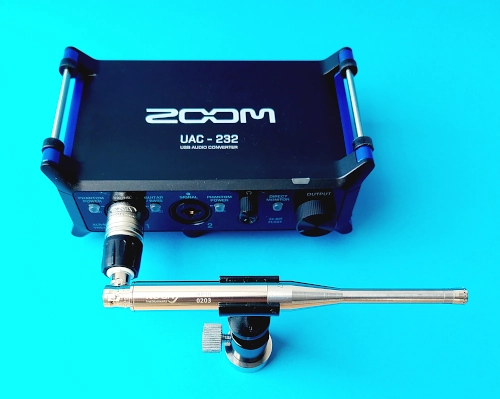
- Dual AD circuitry with 32-bit float recording technology
- High-quality mic preamps, same as the Zoom F6
- 2x XLR/TRS combo inputs
- Headphone output and 2x TRS main outputs
- High-power headphone outputs (100 mW)
- Records up to 192 kHz sample rate
- Compatible with Windows, Mac, and iOS devices (Android not supported)
- Vertical or horizontal use
- Bus-powered operation (separate power required for Lightenting-enabled iOS devices)
- Class 1 WS3F according to IEC 61094-4
- Microphone type: Free field
- Pre-polarized
- Microphone size: 1/4″
- Frequency response: 5 Hz to 100 kHz
- Polar pattern: omnidirectional
- Sensitivity 3.5 mV/Pa
- Measuring range 36 dB (A) to 168 dB SPL peak (5% dist.)
- IEPE supply 2 – 20 mA
- Bias voltage: 12.5 V
- Temperature range -10 to +100 °C
- Dimensions: ø12.5 x 150 mm
- Connector: BNC
- WS-RG-40 windscreen 40 mm diameter
AI-basedd sound test
Ready to use immediately
With the NoiseQS starter kit, we offer you a quick and cost-effective introduction to the world of acoustic quality control.
By using plug-and-play hardware and the intuitive “NoiseQS” software, you can implement acoustic good/bad detection with AI-supported analysis and identify anomalies in order to sort out defective components.
IEPE Microphone MI19-HS
20 Hz to 30 kHz
Microphone with High Sensitivity 100 mV/Pa
Range 24 dB(A) to 130 dBPeak
1/4″ measurement microphones with a pre-polarized capsule deliver a voltage of 3 to 5 mV/Pa and have a self-noise of around 35 dB(A).
With a sensitivity of 100 mV/Pa, the MI19-HS has a twenty times higher output voltage at 24 dB(A) self-noise.
The high signal-to-noise ratio and the high sensor sensitivity have an optimum effect on the resolution of the measurement data acquisition, which leads to better measurement results.
Model | 1/4″ IEPE Microphone Sytems Class 1 with Preamplifier | Price |
|---|---|---|
 | ROGA Instruments products are free from planned obsolescence, technically accessible, durable and repairable. | |
POM-MI1921 | MI19 and MI21 microphone sleeve adapter from 1/4″ inner diameter to 1/2″ outer diameter. POM material to ensure galvanic isolation to prevent ground and earth loops | 24 € |
POM-MI17RG50 | MI17 and RG-50 microphone sleeve adapter to 1/2″ outer diameter. POM material to ensure galvanic isolation to prevent ground and ground loops | 24 € |
MicCAL | Microphone Calibration Fee for ROGA Instruments microphones MI15 | MI17 | MI18 | MI19 | MI21| RG-50 | RG-50HL| MP30| MP40 After successful factory calibration, the microphone is returned to the customer with our factory calibration certificate. | 210 € |
MicREP | Microphone Repair Fee for ROGA Instruments microphones MI15 | MI17 | MI18 | MI19 | MI21| RG-50 After successful repair and factory calibration, the microphone is returned to the customer with our factory calibration certificate. | 225 € |
WS-RG-40 | 1/4″ microphone windscreen Ø 40 mm | 38 € |
MI19 | ¼” IEPE microphone for industrial applications Sensitivity 50 mV/Pa Constant current supply 2 – 20 mA BNC connector Polar pattern: omnidirectional Class 1 frequency response in accordance with IEC 61672 20 Hz – 30 kHz calibration sheet included Sensitivity & Frequency Response Inherent noise 30 dBA SPL Max 130 dB HS Code 85181000 | 410 € |
MI19SW | IP55 splash water resistant ¼” IEPE microphone for industrial applications Sensitivity 50 mV/Pa Constant current supply 2-8 mA BNC connector Polar pattern: omnidirectional Class 1 frequency response in accordance with IEC 61672 20 Hz – 30 kHz calibration sheet included Sensitivity & Frequency Response Inherent noise 30 dBA SPL Max 130 dB HS Code 85181000 | 455 € |
MI19-HS | High Sensitivity ¼” IEPE microphone for industrial applications Sensitivity 100 mV/Pa Constant current supply 2-8 mA BNC connector Polar pattern: omnidirectional Class 1 frequency response in accordance with IEC 61672 20 Hz – 30 kHz calibration sheet included Sensitivity & Frequency Response Inherent noise 30 dBA SPL Max 130 dBPeak HS Code 85181000 | 525 € |
MI19-HSSW | IP55 Splash Water Proof – High Sensitivity ¼” IEPE microphone for industrial applications Sensitivity 100 mV/Pa Constant current supply 2-8 mA BNC connector Polar pattern: omnidirectional Class 1 frequency response in accordance with IEC 61672 20 Hz – 30 kHz calibration sheet included Sensitivity & Frequency Response Inherent noise 30 dBA SPL Max 130 dBPeak HS Code 85181000 | 685 € |
MI19-HL | High Sound Pressure Level Microphone SPL Max. 179 dB(C) Peak ¼” IEPE microphone for industrial applications Sensitivity 100 mV/Pa Constant current supply 2-8 mA BNC connector Polar pattern: omnidirectional Class 1 frequency response in accordance with IEC 61672 20 Hz – 30 kHz calibration sheet included Sensitivity & Frequency Response Inherent noise 30 dBA SPL Max 179 dBCPeak HS Code 85181000 | 980 € |
MP30-HSPL-342 | High Sound Pressure Level Microphone SPL Max. 186 dB(C) Peak 1/4″ microphone with constant pressure frequency response WS3P according to IEC 61094-4 Pressure 3.5Hz to 70kHz 60dB(A) to 186dB pre-polarized HS Code 85181000 | 2105 € |
MP30-Ultra | Ultrasound Microphone 5 Hz to 100 kHz 1/4″ microphone with constant pressure frequency response WS3F according to IEC 61094-4 Free Field 5Hz to 100kHz 35dB(A) to 168dB pre-polarized HS Code 85181000 | 1995 € |
MI21 | ¼” IEPE condenser microphone Splash Water Proof IP55 Sensitivity 50 mV/Pa / ± 1.0 dB CCP IEPE supply 2-6 mA BNC connector Polar pattern: omnidirectional Frequency response IEC 61094-5 20 Hz – 4 kHz: ± 0.5 dB 4 kHz – 20 kHz: ± 1.5 dB corresponds to class 1 Calibration sheet included Sensitivity & Frequency Response Inherent noise 26 dB(A) SPL Max 130 dB HS Code 85181000 | 618 € |
MI17 | 1/4″ IEPE microphone, Sensitivity 50 mV/Pa, constant current supply 2-8 mA BNC connection Class 1 frequency response in accordance with IEC 61672 20 Hz – 30 kHz free field including individual Calibration sheet (sensitivity & frequency response) Inherent Noise 30 dB (A) HS Code 85181000 | 425 €
|
MI17SW | 1/4″ IEPE microphone Splash Water Proof IP55 Sensitivity 50 mV/Pa, constant current supply 2-8 mA BNC connection Frequency response: 20 Hz – 30 kHz: free field Class 1 frequency response in accordance with IEC 61672 including individual Calibration sheet (sensitivity & frequency response) Inherent Noise 30 dB (A) HS Code 85181000 | 495 €
|
RG-50 | 1/4″ IEPE free field microphone Sensitivity 50 mV/Pa constant current supply 2- 20mA BNC connection Frequency response 5 Hz – 4 kHz: ± 0.5 dB 4 kHz – 30 kHz: ± 1.5 dB free field, corresponds to class 1 IEC 61094-5 including individual Calibration sheet (sensitivity & frequency response) Inherent Noise 26 dB (A) HS Code 85181000 | 588 € |
RG-50SW | 1/4″ IEPE Free-field microphone Sensitivity 50 mV / Pa constant current supply 2- 20mA BNC connection Splash Water Proof IP55 Frequency response 5 Hz – 4 kHz: ± 0.5 dB 4 kHz – 30 kHz: ± 1.5 dB free field, corresponds to class 1 IEC 61094-5 including individual Calibration sheet (sensitivity & frequency response) Inherent Noise 26 dB (A) HS Code 85181000 | 618 € |
RG-50HL | High Sound Pressure Level Microphone SPL Max. 150 dB(C) Peak High SPL Microphone e.g. shooting noise WS3F Free-field IEC 61094-5 Total length: 95 mm Sensitivity 14 mV/Pa constant current Supply 2-20 mA BNC connection Polar pattern: omnidirectional Frequency response: 5 Hz – 4 kHz: ± 1 dB 4 kHz – 30 kHz: ± 1.5 dB factory calibration certificate included measuring range up to SPL 144 dBRMS / 150 dB peak HS Code 85181000 | 830 € |
Pressure Field Microphone
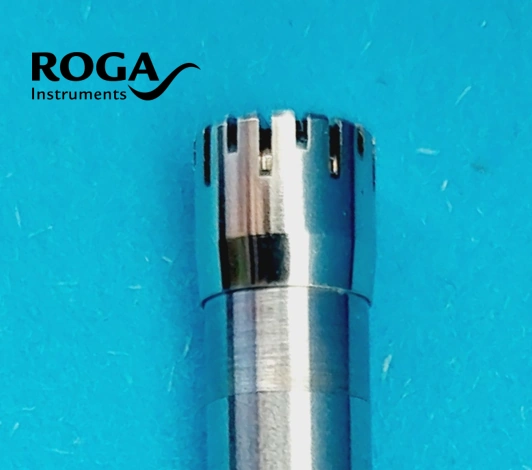
-
Price: 980 €
Shipping included
High SPL Microphone
MNP47
The MNP47 1/4″ measurement microphone opens the possibility of using a high-quality, pre-polarized ¼” pressure field measurement microphone capsule on measurement systems with IEPE supply.
Typical applications are measurements of high sound pressure levels e.g. in the defense industry or development of rocket engines or noise measurement in high voltage arc experiments.
The measuring microphone is connected to the measuring channels via a fixed SMB connector with SMB cables or usual BNC cables via a SMB-BNC adapter.
- 1/4″ microphone
- 4 mV/Pa
- Class 1 according to IEC 61094-4 WS3P
- Pressure field
- 10Hz to 20kHz
- 35 dBA to 164 dB
- Factory calibration certificate
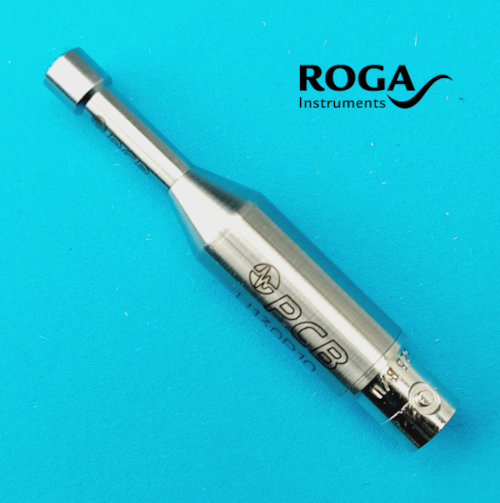
-
Price: 385 €
38 € Shipping Price
ICP Microphone
PCB 130A10
- 1/4″ microphone
- 30 mV/Pa
- Class 1 according to IEC 61672
- Free field
- 10Hz to 20kHz
- 26dBA to 135dB
- Factory calibration certificate
Measuring range, sound pressure level and microphone sensitivity.
®TRADEMARK
ICP is a registered trademark of PCB Piezotronics, Inc., DeltaTron is a registered trademark of Hottinger Brüel & Kjær A/S, ISOTRON is a registered trademark of ENDEVCO.
This document only describes the technical principles involved and inevitably mentions the registered trademarks of other manufacturers, which is not intended and will not harm the interests of trademark owners. The registered trademarks mentioned above belong to their respective owners.
